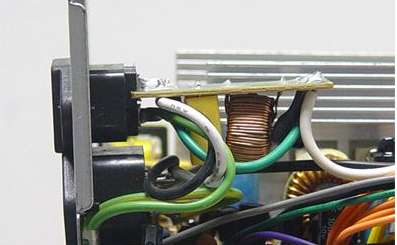What are emi, ems and emc? There are many English abbreviations in the field of electrical interference.
Literal translation of emi (electro magnetic interference) is electromagnetic interference. This is a compound word, we should consider "electromagnetic" and "interference" separately.
The so-called "interference" refers to the two-layer meaning of the performance degradation of equipment after interference and the source of interference to the equipment. The first meaning is like thunder and lightning causing noise on the radio, snowflakes on the TV screen after a motorcycle driving nearby, radio sounds after picking up the phone, etc. These can be abbreviated as "bci", "tvi", "teli", these abbreviations Both have the same "i" (interference) (bc: broadcast)

So which part of emi is emi standard and emi test? Of course, it is the second meaning, that is, the source of interference, which also includes the electromagnetic energy before the interference.
The second is "electromagnetic". If the charge is static, it is called static electricity. When the different electric potentials move in unison, electrostatic discharge occurs, generating a current, and a magnetic field is generated around the current. If the direction and magnitude of the current continue to change, electromagnetic waves are generated.
Electricity exists in various states, and we refer to all these states collectively as electromagnetism. Therefore, the emi standard and the emi test are to determine the state of the electricity being processed, determine how to test, and how to evaluate.
The literal translation of ems (electro magneTIc suscepTIbility) is "electromagnetic susceptibility". It means the ease of performance degradation due to electromagnetic energy. To make it easy to understand, we compare electronic devices to people, and electromagnetic energy to cold viruses. Sensitivity is whether or not you are susceptible to catching a cold. If you are not susceptible to catching a cold, it means that you have strong immunity, which is the English word immunity, which means strong resistance to electromagnetic interference.
The literal translation of emc (electro magneTIc compaTIbility) is "electromagnetic compatibility". It refers to the ability of the electromagnetic energy generated by the equipment to neither cause interference to other equipment, nor to interfere with the electromagnetic energy of other equipment.
The term emc has a very broad meaning. Just as a blind person touches an elephant, what you touch is very different from what you actually touch. In particular, electromagnetic phenomena that are contrary to the design intent should be regarded as emc problems.
Electromagnetic energy detection, anti-electromagnetic interference test, statistical processing of test results, electromagnetic energy radiation suppression technology, natural electromagnetic phenomena such as lightning and geomagnetism, the influence of electric and magnetic fields on the human body, the international standard of electric field strength, the transmission path of electromagnetic energy, Relevant standards and restrictions are included in emc.
Can further explain:
When we are watching TV, if someone nearby uses household appliances such as a hair dryer or electric shaver, annoying snowflake stripes will appear on the screen. The rice cooker can't cook rice, the air conditioner that is obviously turned off will turn on itself after a while... These are common electromagnetic interference phenomena. What's more serious is that if electromagnetic interference signals interfere with medical electronic equipment that is monitoring the condition or an aircraft that is flying, it will cause unimaginable consequences.
Electromagnetic compatibility (EMC) refers to the ability of a device or system to operate in compliance with the requirements in its electromagnetic environment and not produce intolerable electromagnetic interference to any device in its environment. Therefore, EMC includes two requirements: on the one hand, the electromagnetic interference generated by the equipment in the normal operation process cannot exceed a certain limit; on the other hand, it means that the equipment has a certain degree of electromagnetic interference in the environment. The degree of immunity, that is, electromagnetic susceptibility.
The so-called electromagnetic interference refers to any electromagnetic phenomenon that can degrade the performance of a device or system. The so-called electromagnetic interference refers to the performance degradation of equipment or systems caused by electromagnetic interference. Traditionally, EMC includes two aspects: EMI (electromagnetic interference) and EMS (electromagnetic susceptibility).
With the development of electrical and electronic technology, household appliances have become increasingly popular and electronic, radio and television, post and telecommunications, computers and their networks have become increasingly developed, and the electromagnetic environment has become increasingly complex and deteriorated. The electromagnetic compatibility of electrical and electronic products has become more and more popular in various countries. The attention of the government and production enterprises. Since 1996 the European Community stipulated that electrical and electronic products must be affixed with the CE mark before they can be sold on the European Community market, all countries have taken corresponding measures. As a domestic appliance manufacturer, we must act as soon as possible to understand and improve the EMC performance of the product, and follow the new situation of EMC certification in order to gain the initiative in the market.
Liquid Crystal Display For Home Appliances
Liquid Crystal Display For Home Appliances,High Resolution Portable Lcd Display,Refrigerator Lcd Liquid Crystal Display,Response Fast Remote Lcd Monitor
Dongguan Yijia Optoelectronics Co., Ltd. , https://www.everbestlcdlcm.com
